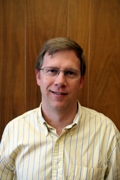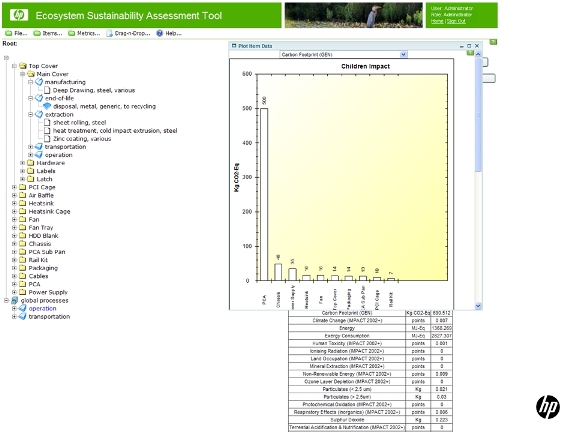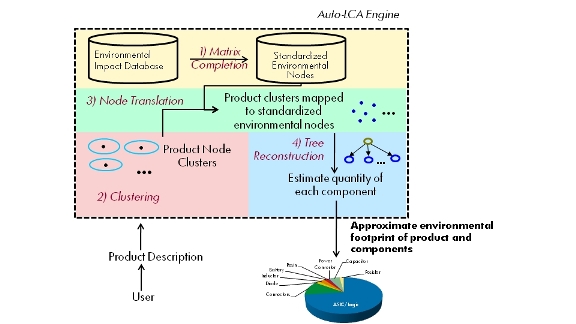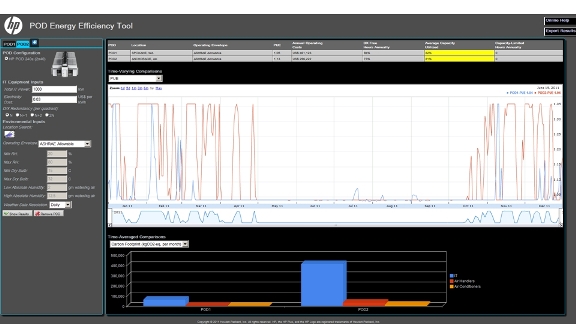HP Labs leads university students to solve sustainability problems
Sustainable Ecosystems Research Group (SERg) collaborates with top universities to create sustainable IT ecosystems

Distinguished
technologist
Cullen Bash
"Rather than simply funding a team of Ph.D. students for a year and asking that they come back with findings they can publish, we invest in long-term collaborations and work closely with our university researchers," said Cullen Bash, distinguished technologist at HP Labs. "Our goal is to develop working solutions that we can pass along to HP BUs to address real-world customer problems."
Open innovation research model

Principal scientist
Amip Shah
HP Labs' SERg is currently involved in ten university partnerships, including top research institutions like Carnegie Mellon, UC Berkeley, University of Limerick in Ireland and Virginia Tech. The most important aspect of these collaborations is that they create value for HP's range of products—from enterprise servers, storage and networking to consumer laptops, PCs and mobile devices.
According to Amip Shah, a principal scientist in HP Labs' SERg team, who himself participated in the program as a Ph.D. candidate at UC Berkeley before joining HP Labs as a full-time researcher, it's the interesting, real-world problems that draw students to the program.
"HP understands the challenges that businesses and customers face," he said. "Many students are drawn to the program because they're given opportunities to impact technology and help solve real problems facing organizations."
Research into data center efficiency results in sustainability tool
One of SERg's notable successes is the Environmental Sustainability Assessment Tool (ESAT). The tool originated from a multiyear project with UC Berkeley that focused on energy inefficiencies in the data center. Researchers focused specifically on how to use the second law of thermodynamics for detecting inefficiencies in energy consumption by pinpointing where entropy is generated.

"When the project began we wanted to analyze data centers in a way that hadn't been done before," said Bash. "The goal was to find out where data centers are efficient and where they're not. A few years into the project, we realized that the same methodology could be extended to analyze how data centers are built as well. The result, almost a decade after we started, was ESAT."
According to Shah, HP soon realized that ESAT could be used beyond the data center. "We recognized that ESAT could be used for many applications across different industries, not just data centers."
For example, HP is using ESAT to help a large glass manufacturer reduce the cost and improve the sustainability of its glass manufacturing process. Whether a data center or a glass panel, HP can now use ESAT to help customers understand the environmental impact of products over their entire lifecycle, from rare earth mineral extraction and carbon footprint during manufacturing, to their disposal and recycling.
Automating ESAT for the non expert
After developing ESAT, the next step was to modify the tool so it was more efficient and easier to use, especially by non-experts. "Environmental analysis can be laborious to implement and often requires a trained expert," Shah explains. "When analyzing a plastic water bottle, for instance, you're looking at maybe 900 different materials and energy flows. That's 900 separate analyses. You can't scale a manual process to support that kind of workload."
HP Labs is solving this problem through a collaboration with Virginia Tech's Discovery Analytics Center to develop a tool to automate the most labor-intensive portions of using a tool like ESAT. The result is the Auto Lifecycle Analysis tool (Auto LCA). With Auto LCA, rather than manually mapping the environmental impact for each material, you can simply upload a list (like a commonly found Bill of Materials). The tool will then automatically analyze each material on the list and calculate impacts like carbon emissions, environmental toxicity, and human health. In ongoing work, such an analysis is followed by automatic recommendation of environmentally friendly substitutes for any "hotspots" (environmental hotspots are those components or processes causing the highest impacts in the Bill of Materials).

Solving the data center energy consumption conundrum
Another data center energy issue that has plagued many organizations is the balance of computer system and facility energy consumption and cost. In its mission to create more energy-efficient data centers, SERg partnered with the University of Limerick in Ireland through an Irish Research Council for Science, Engineering and Technology (IRCSET) grant. The goal of the partnership was to develop a tool to analyze energy consumption and cost holistically, taking the entire data center ecosystem into account.
Typically, the people who design data centers don't think about the interactions among the intricate components of computer systems. While on the other hand, designers of computer systems don't necessarily think about the energy costs of the facilities in which the systems will reside. According to Bash, these two worlds have collided, causing overall data center energy consumption to rise.
"At the facility level, it's more cost effective to run data centers at higher temperatures. But the warmer your data center gets, the harder your servers must work to cool themselves, leading them to consume more energy. We lacked a tool to analyze these issues together and figure out a more sustainable overall energy consumption model."
Multi-Scale Energy Modeling tool helps HP customers predict energy costs
To solve this conundrum, HP and the University of Limerick built the Multi-Scale Energy Modeling (MSEM) tool, which, according to Bash, analyzes energy consumption comprehensively, "from the chip to the cooling tower."

Today, HP's Enterprise Servers, Storage and Networking (ESSN) businesses is planning to use MSEM to help determine projected energy consumption and costs for HP's recently announced Performance Optimized Data Center, POD 240a, dubbed the "EcoPOD."
For example, because a data center's energy consumption and costs will vary according to the climate in which it is located, organizations need the ability to model different geographic locations for new data centers. Using the MSEM tool, HP ESSN consultants can plug in different cities, IT loads, and energy costs. The tool will provide projected energy consumption, greenhouse gas emissions, and operating costs for each location. Thanks to the MSEM tool, HP can more accurately predict how much energy the EcoPOD will use, allowing customers to choose the most cost-effective locations.
Open innovation comes full circle at San Jose State University
Ultimately, it's the flow of knowledge among participating universities, HP Labs and HP business units that makes SERg's research model so effective. According to Bash, this is exemplified by San Jose State University's use of data models from ESAT provided by HP, as part of an introductory materials engineering course. The university has since gone on to create their own product life cycle software.
"ESAT has now travelled full circle, metaphorically speaking," said Bash. "What started as a research collaboration with UC Berkeley, matured into an innovative offering within HP ESSN, and is now influencing the curriculum at a major university."